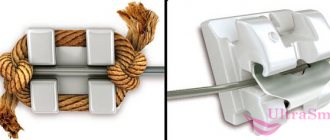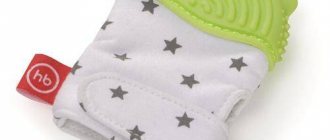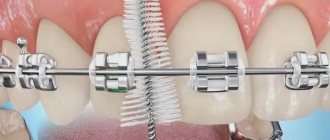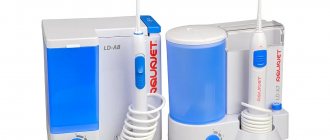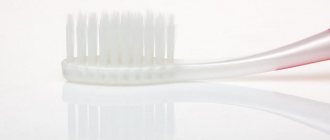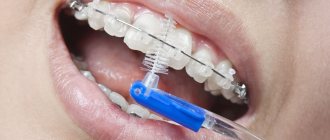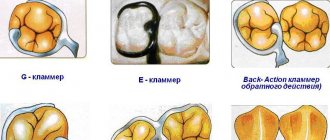The cleanliness of the apartment and bathroom is of great importance. Accordingly, objects with the help of which order is restored cannot be considered insignificant. Cleaning the toilet is not a whim, but an important part of hygiene. Therefore, here are some subtleties about how to choose toilet brushes.
When buying a brush, you should hold it in your hands, checking how comfortably it fits in your hand. If there are models on the counter with handles of different lengths, you should choose the one that is longer, so you don’t have to bend too low over the toilet. Moderate elasticity and strength of the handle characterize a high-quality model. To determine which toilet brush is best, you should take into account one more indicator - the stiffness of the bristles. Stiff bristles efficiently remove dirt from earthenware. The dismountable brush makes it easier to care for – washing, drying, disinfecting.
Appearance is of no small importance. Color, shape, finish should be combined with the design of the bathroom.
Any brush model should be periodically washed and disinfected, and then dried well. How to wash and clean a toilet brush is described below.
Washing and disinfection are usually carried out using chlorine-containing solutions, hydrogen peroxide, and soda. The stand and the brush itself are washed, rinsed, and dried thoroughly. If all conditions are met, no questions will arise about how to keep the toilet brush clean, because steamed chlorine and vinegar do an excellent job of disinfecting even heavily soiled surfaces.
The brush itself should also be regularly disinfected, even in the absence of infectious diseases. There is no need to be tormented by questions, looking for “revolutionary” ways to clean and wash a toilet brush for a toilet bowl. It is enough to use the same solutions with chlorine or buy any chlorine-containing cleaning product.
If you remember the safety rules when working with harmful substances, there will be no difficulties. When working with chlorine solutions or vinegar, precautions should be taken - wear rubber gloves, avoid getting vapors into the respiratory tract and liquid droplets on the mucous membranes.
If you are at a loss about how often to wash this device, you should remember that there are generally accepted rules for using a toilet brush. It needs to be washed at least once a month, and preferably every week. If there are cases of intestinal infection in the family, the device should be washed and disinfected every day.
Types of brushes
Design features may vary.
Glass brush
A glass brush is placed in a bowl or glass. Does not require special placement; it is installed next to the toilet. The main disadvantage is the proliferation of pathogenic microbes in thickets where there is constant humidity and dampness. It is necessary to regularly disinfect and clean the toilet brush.
Wall brush
The place of fastening is the wall, but it will still be placed in the same glass. The disadvantages are the same as with a glass. The main advantage is ease of cleaning; it is most suitable for installation with wall-hung toilets.
Hanging brush
The entire structure is placed on a special hook or installed on the floor. There is a container at the bottom where water flows, preventing it from getting onto the floor. Less favorable conditions for the proliferation of pathogenic microbes are created. There are brushes with standard, familiar brushes, and there are special ones with double bristles with a toilet paper holder, and the like.
There are original brushes with designer gadgets in the form of a container in the shape of sea water with shells, handles that imitate animals, brushes with portraits of political party leaders. You can choose to suit every taste and preference, thus decorating your everyday life.
cool toilet brush ceramic brush
Vinegar and soda
Table vinegar, which every housewife has, gets rid of the smell and removes the brush quite well. You can add soda and pour vinegar directly into the thicket where the brush is located. A chemical reaction will occur releasing foam. Leave the brush for 40 minutes and clean it by rinsing with warm water.
Vinegar cleans well limescale deposits caused by extremely hard tap water. Removes rust if diluted with water and poured into the tank. Approximately 1 cup of vinegar is needed.
What to look for when choosing
To successfully combat pollution, it is important to choose a quality brush. Modern high-quality brushes are different:
- Practicality;
- durability;
- convenience and ease of use;
- aesthetics.
When choosing a toilet brush, you should pay attention to some important features. The handle should not be very short or, on the contrary, too long
Made of hard, smooth material (not bendable). The bristles should be moderately hard and made of artificial material. A brush that is too soft will not be able to clean the surface properly.
The brush should be combined with the overall interior of the toilet room. Do not be conspicuous and do not stand out from the general background. Toilet brush disinfectants will help keep this accessory clean and fight germs and bacteria. After all, to disinfect, it is not enough to simply wash the brush with soapy water. It is better to use specialized chlorine-based cleaning products. For example, “Domestos”, “Toilet duckling”, “Cilit Bang”, Whiteness. When working with chlorine-containing products, be sure to wear gloves, as chlorine can cause skin burns.
Disinfection can be carried out using vinegar essence. Be sure to wear rubber gloves and protect your respiratory tract if possible. (The essence has a pungent odor). To combat germs and bacteria, hydrogen peroxide, boric acid and manganese solution are suitable. For disinfection, you can prepare a solution from available materials. Mix soda, vinegar and boiling water. Leave the brush in the resulting solution for one hour. This simple solution works great to disinfect your toilet brush.
Toilet brush disinfectants
Brushes that allow you to clean the toilet can be divided into several types.
Simply cleaning the brush with soapy water will not be enough to remove all bacteria and germs from it. Therefore, it is important to periodically disinfect this accessory using the following substances:
- Whiteness, “Toilet duckling”, “Cilit Bang”, “Domestos” and other cleaning substances containing chlorine. It is imperative to use rubber gloves when working with such products to prevent skin burns.
- Vinegar essence is an excellent disinfectant. It is important to keep it out of the reach of children, and when using it, wear protective gloves and try not to inhale its pungent odor.
- Boric acid, hydrogen peroxide and manganese work well against bacteria.
- The following composition disinfects a toilet brush well: baking soda, vinegar and boiling water. You need to soak the accessory in this product for 1 hour.
The toilet brush needs to be washed regularly, this is the only way to keep it clean and protect it from the spread of germs. However, improper storage of it can lead to the fact that you will have to wash the entire toilet room, including its walls and floor.
What is a toilet brush
This is an item made of man-made fibers. It includes a long handle on which a brush is located and a stand in the form of a glass. What is it for?
The handles of inexpensive brushes are made of plastic, while less affordable ones are made of glass, metal or ceramics. The length of such a handle is 50 - 60 cm.
The bristles of the brush are often made of synthetic materials so that they can be easily cleaned of dirt.
The main requirement when choosing a brush is to buy a waterproof model that will withstand the effects of detergents and chemicals. The brush should be made of hard artificial materials, so it will help to better cope with dirt.
In Russia, cleaning the toilet occurs in small portions of water, which gradually accumulates in the tank. But even after washing off, traces of feces, etc. may remain. It is for cleaning them that a brush is needed. In addition, a high-quality product can rid the toilet of plaque and dirt.
Reference! In Europe or America, the toilet is flushed with a large flow of water, which destroys all bacteria at once.
Rotary and manual options
Technologies are aimed at making it easier to cope with the usual household routine. This also applies to cleaning the toilet.
- Manual brushes will soon become less relevant if electric ones appear, having various attachments that perform their functions.
- Such a device will cope with both cleaning significant dirt and polishing the toilet.
- The length of the handle can be adjusted, which is also very convenient.
Using a brush
Cleaning the toilet
Now let's move on to how to use a toilet brush. For most, the name of this section will lead to a smile, but by reading the instructions for use you can see for yourself that many of the nuances were little known to you or you did not pay attention to them.
So, in order to clean the toilet with your own hands using a special brush, you need to:
- It is comfortable to take it by the handle so that it does not slip out during work. You don’t need to get too close to the brush itself so as not to get your hands dirty. In many models, the grip area is highlighted by some structural elements or color.
- Before you start removing dirt, you need to dip the brush in water. In this case, it will be easier to wash off the dirt. It is possible to add household detergent to the toilet. This way you will not only clean the surface, but also get rid of the unpleasant odor.
- At the end of the treatment, it is necessary to drain the water from the storage tank by placing a brush under the stream. This will remove any stubborn fecal residue from the bristles.
- After finishing washing, you need to shake off excess liquid from the brush and place it in the place intended for storage.
There are a couple more points that must be followed without fail:
- When cleaning the toilet, you do not need to make any too sudden movements. This will spray unclean water onto other items in the toilet, your clothes, and your skin. This is unlikely to bring pleasure, so you need to move the brush smoothly and carefully.
- When shaking off water, tap not on the toilet seat, but on the inner surface of the toilet bowl (near the water). This will also protect you and the toilet environment from unclean water and germs.
Storage and care
It was already mentioned above that toilet cleaning accessories stored in wall or floor cups are not the best solution.
In this case, the bristles are in constant contact with liquid and microscopic remains of human biological waste. This environment is favorable for the development of bacteria, which, with repeated use of the brush, can get on the skin or into the respiratory tract.
To avoid this, you need to buy a hanging brush.
But even here it is necessary to pay attention to some features:
- the brush must be hung so that it does not reach the floor surface;
- the bristles of an accessory hung on a hook should not come into contact with the wall;
- It is necessary to install a sufficiently wide container under the brush into which the water will flow at the end of its use.
Naturally, the device itself also needs to be washed periodically. The more often you do this, the less danger there is to your health. In addition, it is useful to sometimes (or better yet, as often as possible) disinfect the brush itself.
This can be done in two ways:
Using a liquid intended for disinfection (potassium permanganate, boric acid, hydrogen peroxide, and even then). Using vinegar or bleach solution
In this case, special care must be taken to ensure that the active substances do not come into contact with the skin or mucous membranes. Wear protective gloves.
After disinfection is completed, the brush must be rinsed again under running water in the toilet and hung on a hook to dry.
Why is it important to keep your toilet brush clean?
At first, an unstained brush does not evoke feelings of disgust or disgust. With constant use, it begins to turn yellow and spread a nasty smell; millions of microbes and germs accumulate on it, which can cause diseases (disturbances in normal functioning, performance)
gastrointestinal tract or respiratory system disorders.
Brushes can be mounted or installed in a bowl. If the brush is suspended, there must be a container under it to collect water. The bowl must be wide, with smooth edges. The best height between the brush and the container is 10-15 cm, so that water dripping from the brush does not splash on the walls and floor of the toilet.
A brush that sits in a bowl is the least hygienic. All the liquid from it accumulates inside and with the rarest cleaning, bacteria or a nasty smell is formed. In this case, you need to rinse the brush once a day and drain it.
bowl the accumulated water.
How to use a toilet brush correctly
It would seem that there is nothing complicated here to further focus on this, but there are a number of points that you should know and observe. Here are instructions on how to use a toilet brush:
- Do not take the brush close to the brush to maintain hygiene measures, there may be contamination with pathogenic microorganisms, do not get dirty. The place where you should pick it up is structurally designed in the form of a handle or separated by color.
- Wet it with water and add disinfectant solution or powder. The antibacterial agent can be added directly to the toilet or to a glass for storage.
- Wipe the stained area, working carefully so as not to splash your hands or clothing.
- Wipe slowly, without much effort. Flush everything down the toilet, preferably by flushing and rinsing again, using a brush in clean water when flushing to remove all dirt between the bristles. Shake the brush to remove excess moisture and return it to its storage location.
Shake gently as close to the drain hole as possible without splashing drops all over the toilet or smearing the walls. The remaining dirt on the walls will be an additional source of contamination and a source of infection.
Do not drip the brush onto the floor; all remaining liquid should drain into the glass.
Instructions for using the brush
Preparation for use
(A toilet brush has a distinction between “top” and “bottom”. It is common to identify the part with the brush as the “bottom” and the part with the handle as the “top”. These definitions will be used further)
After defecation is completed, you need to take the toilet brush by the “top” and at a quick glance determine the extent of contamination of the toilet bowl.
Exploitation
Now you need to lower the lower part of the brush into the toilet and remove the dirt with cleaning movements.
There should be no toilet paper in the toilet. Soggy toilet paper has a nasty tendency to get stuck in the brush's bristles. It is very likely that the unsightly appearance of such a brush will discourage subsequent toilet visitors from using it.
End of use
The toilet brush often becomes very wet. To prevent liquid from dripping onto the floor, you should lightly tap the toilet brush several times (risk of splashing!) on the edge of the toilet bowl, and then immediately place the brush in the holder.
Experienced users can remove water using centrifugal force by deftly and quickly rotating the brush between the fingers of one hand (similar to spinning a spinning top). When doing this, make sure that the entire brush of the toilet brush is located below the top edge of the toilet bowl (risk of splashing!). This method may require some practice, but it is virtually silent and will not cause damage to the brush brush, seat, or toilet cavity...
How to use the product – with and without braces
How to use a dental brush correctly? The algorithm of actions is as follows:
- select and install the desired attachment on the holder,
- place the brush near the dentition at an angle of 90˚ relative to the front surface of the teeth,
- carefully insert the product into the space between the teeth so that its tip appears on the opposite surface,
- clean the interdental space by rotating the brush or moving it back and forth,
- do the same with the next gap,
- After cleaning, rinse your mouth with water or mouthwash.
Instructions for use, care and selection of toilet brushes
Probably everyone knows why a toilet brush is needed. At the same time, not everyone knows what they are, what materials they are made from, how to use them, and so on. It’s interesting that even for such a seemingly simple device as a toilet brush, there are entire instructions, which we’ll talk about today. We will try to tell you as much as possible about this device, which will greatly facilitate your further choice of accessory.
- 1 Types
- 2 Requirements for accessories 2.1 Rules of use
- 2.2 Storage and care
Assortment of standard plastic brushes
First, let's divide them depending on the material of manufacture. A modern toilet brush can be:
- Stainless steel, metal;
- Chrome plated;
- Ceramic;
- Plastic;
- Silicone.
Of course, the price directly depends on the material. So, you can easily find a simple toilet brush made of plastic for several tens of rubles, or you can purchase it for several tens of thousands of rubles. Yes, such models actually exist. Most importantly, when purchasing, you should focus not on price, but on quality. Cheap plastic will break quickly and will not last long. Metal models will allow you to forget what it’s like to buy brushes for many years. And if the metal is also of very high quality, the accessory will not lose its shine or visual appeal
And this is important
Now let's talk about the type of toilet accessory.
- Glass. This toilet brush is located in a special glass or container lying on the floor.
- Suspension. The accessory is hung on the wall, and a container is placed directly under it, into which all the water drips.
- Wall. The device is mounted on the wall, where there is a container for draining liquid.
The choice depends entirely on you, on the specific design solutions in the plumbing unit, and your needs in terms of physical capabilities. For example, it is difficult for older people to bend over, as a result of which a floor-mounted toilet brush will not work. Or small children use the toilet, and the brush is high on the wall. Also not an option. So think, reflect.
Convenience
Ease of use is an important factor when choosing a brush. Take the instrument in your hand and hold it. If you are comfortable, then you can clean the toilet bowl without any extra effort.
Length and shape of the brush handle
Models with a long handle are much more convenient to use . The handle should be made of a smooth, durable material, without burrs or roughness. It should not bend too much or break when pressed.
To reach the most secluded corners, the brush should have a curved shape:
Quality of brush head bristles
Stiff, sparse bristles with multi-level bristles clean the toilet well and are easy to rinse under running water. Silicone models provide a higher level of hygiene.
If you choose the right one, this accessory will last for many years.
Toilet brush mounting type
This parameter depends entirely on your preferences. Some people find it more convenient to use a floor structure, while others prefer a wall structure. The floor brush is simpler - no need to drill into the wall. And it's mobile, which is important when cleaning multiple toilets.
Unusual design
In fact, the choice of toilet brushes today is simply huge. In addition to classic options, you can find models in stores that demonstrate the full range of designer imagination and wit. Original toilet brushes are sold not only in plumbing stores, but also in joke and practical joke departments.
Thus, there is a whole series of toilet brushes in the shape of famous politicians. They are caricatured figures of presidents of different countries, with a toilet brush sticking out of their heads instead of hair.
Toilet brushes in the shape of cartoon animals or fairy-tale characters are popular. Such models allow you to quickly accustom your child to perform basic hygiene procedures.
Interesting models of toilet brushes, stylized as bowling pins, pistols with a silencer or upside down glasses of wine.
The use of such unusual, humorous accessories in the design of a bathroom or toilet allows you to give the appearance of the room a share of ease, so necessary for creating a harmonious interior.
Dental brush - what kind of device is it?
A dental hygienic brush for teeth is a thin rod-shaped base along which nylon bristles, or villi, are located. The bristles can be densely or sparsely spaced, have different lengths and thicknesses, and be hard or soft.
The brush nozzle itself is equipped with a handle holder, which can also have different sizes. Manufacturers make handles from different materials, but they are all easy to use, non-slip, and hypoallergenic. Look at the photo below - you will immediately understand what product we are talking about.
Features of use
Cleaning the toilet
To maintain sanitation in the restroom, it is necessary not only to use a brush, but to do it correctly.
Below are instructions for its use:
You need to take the ruff by the handle.
Cleaning the toilet with a brush
- Then, use a gentle brush to remove dirt from the walls of the toilet. If necessary, you can wet the brush or even add a small amount of detergent and disinfectant.
- After completing the work, the brush should be rinsed and lightly shaken inside the toilet, doing this carefully so that the splashes do not scatter.
Storage and care
If you prefer a hanging brush, then first of all you need to think about the place where it will hang. The most important thing is that the brush is located to the side and does not touch the walls. A container should be placed under it into which the water will drain.
If the brush has a stand, the container must be periodically drained and, as mentioned above, a disinfectant or ordinary vinegar must be poured into it.
The brush must be kept clean
Regardless of the type of brush, it needs to be washed periodically.
You can do this in the following way:
- First of all, you should prepare a suitable container and pour any disinfectant solution into it. For example, you can use white for these purposes.
- Then you need to put the brush in the toilet and turn on the flush, as a result of which it will be washed.
It should be noted that the brush, like other cleaning products for plumbing fixtures, must be changed periodically. As a rule, the service life of the brush is 3-6 months, after which it must be replaced with a new one. Otherwise, the product loses its properties and attractive appearance, not to mention the colonies of bacteria that multiply on its surface.
Here, perhaps, is all the information about toilet brushes that you need to know in order to keep your plumbing fixtures clean and thereby ensure health safety for all family members.
Basic methods
The following products are mainly used to clean brushes:
- Domestos;
- Silit;
- Faberlic for toilets;
Table vinegar is no less effective in removing contaminants, which simultaneously suppresses the activity of pathogenic microorganisms: staphylococci, streptococci and others.
Chemicals
Regardless of the type of household chemical you choose, you can clean your toilet brush using one of the following methods:
- Pour the chemical into a container and place the toilet bowl cleaner there for several hours.
- Pour the liquid into the toilet and thoroughly clean the device using a brush.
- Pour the product into the glass in which the brush is stored and let it sit for at least 15 minutes. This cleaning option is considered more preferable.
Chemicals for household appliances are highly effective in combating dirt and pathogenic microorganisms. However, such products in concentrated form can be harmful to health. Therefore, when using household chemicals, it is recommended to use protective equipment: gloves, face mask, and so on.
Domestos
Domestos is considered the most common household chemical product. This product is able to clean surfaces with various types of contaminants and destroy bacteria. The main disadvantage of Domestos is that the liquid emits a pungent and unpleasant odor. Therefore, after applying the product, it is recommended to leave the toilet.
Silit
Silit, like Domestos, helps clean surfaces from various types of contaminants. Both products are comparable in effectiveness. Silite has a gel structure. This product, due to the hydrochloric acid included in the composition, is able to remove limescale and deposits.
Toilet bowl cleaner from Faberlic
A Fabelric brand product can clean a toilet brush white. The product is based on formic and oxalic acids, which, unlike the above liquids, do not emit a sharp, unpleasant odor.
Sarma
The Sarma gel-based cleaner is relatively cheap, but is not inferior in effectiveness to the above liquids.
Vinegar
To remove dirt from a brush, use a mixture of two tablespoons of salt and four tablespoons of soda. Both components are mixed until smooth. Then three tablespoons of vinegar and boiling water are added to this composition. The resulting liquid is poured into a glass with a brush and kept for 1-1.5 hours.
Detergent
You can also wash the brush using a mixture that includes:
- 2 tablespoons of detergent;
- a quarter glass of vinegar;
- half a glass of soda;
- 2 tablespoons of soda.
The resulting mixture is also diluted with water and then poured into a glass with a device for cleaning toilet bowls.
Lemon acid
10 grams of citric acid should be mixed with a liter of water and a quarter cup of vinegar. After this, you need to keep the brush in the composition for an hour.
Floor mop
Mop heads are made from different materials, but regardless of this, they must not only be rinsed in a bucket after washing the floors, but also washed after use. Therefore, it is better to buy two nozzles at once, to replace them. You can wash the attachments by hand with detergent or liquid soap, or in a washing machine at temperatures up to 60 degrees C. There is no need to use conditioner or bleach.
To wash and disinfect the mop head, you can do without a washing machine. Rinse it thoroughly, and then soak the rag in a 1:1 solution of hot water and vinegar. Leave for half an hour and then dry thoroughly. Even if you wash and wash the nozzle, you can use it for no longer than 2-3 months. After this, it wears out and does not clean the floors well.
What is it for?
How to use a bidet correctly
As already mentioned, the main purpose of a bidet is to wash the genitals after visiting the toilet. The device simplifies the washing procedure and helps maintain personal hygiene.
It is important that it is much easier and more convenient for people with disabilities, as well as elderly users, to use a bidet rather than toilet paper. The use of a bidet is also indicated to prevent the formation of hemorrhoids.
The bidet is also convenient for washing babies. If there is a shower head, the device is used to clean the bathroom, fill buckets with water, and clean pet trays. If necessary, you can rinse your feet or hands in the bidet, however, provided that the bidet bowl is thoroughly and regularly disinfected.
The main advantage of a bidet is its versatility, practicality, ease of operation and installation. Among the disadvantages is the need to allocate space in the bathroom for the device. However, this disadvantage can be easily mitigated by using a bidet combined with a toilet. The high cost of automatic devices is justified by the comfort and benefits that the operation of the unit brings.
Instructions for use, care and selection of toilet brushes
Probably everyone knows why a toilet brush is needed. At the same time, not everyone knows what they are, what materials they are made from, how to use them, and so on. It’s interesting that even for such a seemingly simple device as a toilet brush, there are entire instructions, which we’ll talk about today. We will try to tell you as much as possible about this device, which will greatly facilitate your further choice of accessory.
- 1 Types
- 2 Requirements for accessories 2.1 Rules of use
- 2.2 Storage and care
Assortment of standard plastic brushes
First, let's divide them depending on the material of manufacture. A modern toilet brush can be:
- Stainless steel, metal;
- Chrome plated;
- Ceramic;
- Plastic;
- Silicone.
Of course, the price directly depends on the material. So, you can easily find a simple toilet brush made of plastic for several tens of rubles, or you can purchase it for several tens of thousands of rubles. Yes, such models actually exist. Most importantly, when purchasing, you should focus not on price, but on quality. Cheap plastic will break quickly and will not last long. Metal models will allow you to forget what it’s like to buy brushes for many years. And if the metal is also of very high quality, the accessory will not lose its shine or visual appeal
And this is important
Now let's talk about the type of toilet accessory.
- Glass. This toilet brush is located in a special glass or container lying on the floor.
- Suspension. The accessory is hung on the wall, and a container is placed directly under it, into which all the water drips.
- Wall. The device is mounted on the wall, where there is a container for draining liquid.
The choice depends entirely on you, on the specific design solutions in the plumbing unit, and your needs in terms of physical capabilities. For example, it is difficult for older people to bend over, as a result of which a floor-mounted toilet brush will not work. Or small children use the toilet, and the brush is high on the wall. Also not an option. So think, reflect.
Why brushes cannot be used with implants and dentures
Some, even well-known manufacturers of dental brushes, indicate in the instructions that their products can be used with dentures, crowns, and implants. But this is just an advertising ploy to expand the customer base. In fact, implantologists are categorically against it, because Gums after prosthetics partially lose sensitivity. Therefore, it is enough to simply damage them with villi (even seemingly soft ones) and cause an infection - and then treat complications. Therefore, it is also prohibited to use toothpicks. And for patients with dentures and implants, it is better to give preference to an irrigator for washing the interdental spaces and subprosthetic space, or choose dental floss labeled “super floss” - the rest will not be suitable, since they are quite hard.
Types of toilet brushes
Yes, and such a simple attribute has variations. Moreover, brushes differ in material, storage method, and, if you like, color.
In order to choose what will be the best option, in your opinion, you need to study what the market offers for these accessories.
According to the material of execution it can be:
- plastic;
- stainless steel;
- ceramic;
- chrome plated;
- silicone.
Depending on the quality and reliability of the selected material, the price of this item also varies. And if an ordinary plastic brush costs very little money, then, for example, a floor-mounted metal toilet brush will be significantly higher in price.
What to choose is up to the owner. Everyone's needs and capabilities are different. But it is clear that a quality item should be more expensive.
In addition to this distinctive feature, a toilet brush may differ from another in its storage method.
Floor. We can say that this is a classic type of toilet accessory. It can also be called glass.
Because the toilet brush is stored in a special bowl, which also serves as a stand. It is installed directly on the floor in any convenient place.
But while this traditional toilet floor brush is very popular, it is still considered the least hygienic option.
In the stand it is stored in a dirty, humid environment without ventilation, which is a favorable factor for the proliferation of pathogenic bacteria and harmful microorganisms.
Wall. This toilet brush differs little from the floor model. Only the stand in this configuration is not located on the floor, but is attached to the wall. The disadvantages of this brush are the same as in the previous storage method.
Suspension. This storage method is considered the most acceptable.
In this case, the brush is hung on a special hook, and the water flowing from it falls into a receiving glass, which is installed directly under the brush.
This ensures ventilation of the hygiene item.
And if the brush is washed well, then with this storage method it will accumulate the least amount of bacteria.
Multifunctional brush model.
The modern market offers original versions of toilet brushes that combine other functions.
Also interesting: Mounting and installing a toilet
For example, a combination of a brush and a toilet paper holder.
It is a high stand on which two stands are installed.
If there is not enough space in the toilet room, then thanks to this design the problem of placing the necessary accessories is solved.
Sometimes the package may also include holders for containers with cleaning products or for newspapers.
Household chemicals
Pour into a glass where there is a brush “Domestos” or “Silit”, “Belizna” which will also help to clean the brush well. Wiggle it around, breaking up solid deposits well.
Advice. For this purpose, take Domestos in a dark bottle. Cleans everything completely, even heavy-duty stains.
Pour in new detergent and soak the brush for two or three hours. Be sure to wash it later with clean running water. During soaking, it is better to take this brush to the balcony or other space so as not to breathe in harmful fumes.
When working with household chemicals, do not forget about rubber gloves and safety glasses.
To improve the ability of water to drain from the brush, if you are not using a mounted brush, clamp it between the toilet lid and leave it in this position for the water to drain.
Sunlight is the best disinfectant.
The sun's rays kill known bacteria and viruses and have a disastrous effect on the testicles of worms, which are not susceptible to the action of antiseptic substances due to their dense outer shell. Place it in the open rays of the sun for 10 - 15 minutes
Based on materials
The same material is used to make the glass stand and handle. The most popular are ceramics, plastic, rubber and stainless steel. There are even wooden tools for cleaning the toilet, but such a thing is harmful to health.
Plastic
The most common and inexpensive material. The brush can have a variety of shapes and colors. The main disadvantage is that it is compared to a disposable item; the product breaks easily.
According to hygiene rules, such a toilet brush needs to be changed every two to three months. You can often see a lid on the handle of the brush. This is necessary to ensure that the smell from the stand does not spread throughout the restroom.
Reference! Designers with wild imagination produce plastic brushes in the form of machine guns, pots for plants, giraffes, cats, etc.
Ceramic
More expensive option. In order not to constantly spend money on such a brush, you can buy a collapsible product and change only the brush.
Photo 1. Ceramic brushes are made in interesting shapes, for example, such an unusual tower will add uniqueness to the interior of the toilet.
The big advantage of ceramic containers is their luxurious appearance and interesting design solutions. But the trouble is that if handled carelessly, there is a high chance of breaking such an exquisite product.
Silicone or rubber
These models use silicone blades instead of bristles. According to manufacturers, such rubber brushes cover a significantly larger surface area of the toilet when cleaning, including under the rim.
The material contains antimicrobial properties and fights dirt and bacteria, even if plumbing cleaners are not used. In addition, dirty water does not accumulate in the brush cup. The product is also used as a plunger for blockages.
With numerous advantages and features, we can assume that such a brush will cost a fairly large sum.
Metal brushes made of stainless steel
This model will fit into any interior: home, apartment, shopping center or office. The material is resistant to corrosion, and therefore practical and reliable.
The advantages of the accessory are easy use and convenient cleaning, because the metal withstands cleaning agents well. However, there is also a significant drawback - the high price.
Prevention of contamination of plumbing fixtures
To reduce the time and effort spent on washing and cleaning the toilet, you can use preventive measures. The rules for maintaining cleanliness and order are not complicated, and following them will keep the toilet in good condition. Among these recommendations are:
- Monitor the serviceability of the tank and the entire toilet, and prevent water leakage.
- Do not clog the toilet with foreign objects, especially those that do not soak in water. Clearing a clog is much more difficult than cleaning the surface of a plumbing fixture. Therefore, it is better not to allow this to happen.
- After each use of the toilet, clean it with a brush.
- Use refreshing and cleansing products - strips, balls, stickers under the rim, which will gradually dissolve with each rinse and fill the water with a weak cleaning composition.
Simple manipulations will help maintain the clean appearance of the toilet and reduce the frequency of general cleaning, and will also prevent the need to take drastic measures.
Thus, there are many different products and methods that can help you clean your toilet. Which drugs to choose is up to each housewife to decide for herself, but if you try several of them, you can find the option that will be most effective and convenient to use. And then the appearance of the toilet will please, and not irritate.
Types of toilet brushes
Yes, and such a simple attribute has variations. Moreover, brushes differ in material, storage method, and, if you like, color.
In order to choose what will be the best option, in your opinion, you need to study what the market offers for these accessories.
According to the material of execution it can be:
- plastic;
- stainless steel;
- ceramic;
- chrome plated;
- silicone.
Depending on the quality and reliability of the selected material, the price of this item also varies. And if an ordinary plastic brush costs very little money, then, for example, a floor-mounted metal toilet brush will be significantly higher in price.
What to choose is up to the owner. Everyone's needs and capabilities are different. But it is clear that a quality item should be more expensive.
In addition to this distinctive feature, a toilet brush may differ from another in its storage method.
Floor brush
Floor. We can say that this is a classic type of toilet accessory. It can also be called glass.
Because the toilet brush is stored in a special bowl, which also serves as a stand. It is installed directly on the floor in any convenient place.
But while this traditional toilet floor brush is very popular, it is still considered the least hygienic option.
In the stand it is stored in a dirty, humid environment without ventilation, which is a favorable factor for the proliferation of pathogenic bacteria and harmful microorganisms.
Wall. This toilet brush differs little from the floor model. Only the stand in this configuration is not located on the floor, but is attached to the wall. The disadvantages of this brush are the same as in the previous storage method.
Hanging brush
Suspension. This storage method is considered the most acceptable.
In this case, the brush is hung on a special hook, and the water flowing from it falls into a receiving glass, which is installed directly under the brush.
This ensures ventilation of the hygiene item.
And if the brush is washed well, then with this storage method it will accumulate the least amount of bacteria.
Multifunctional brush
Multifunctional brush model.
The modern market offers original versions of toilet brushes that combine other functions.
Also interesting: How to grout the seams of ceramic tiles in the bathroom
For example, a combination of a brush and a toilet paper holder.
It is a high stand on which two stands are installed.
If there is not enough space in the toilet room, then thanks to this design the problem of placing the necessary accessories is solved.
Sometimes the package may also include holders for containers with cleaning products or for newspapers.
Common but easy methods for keeping a brush clean
Any detergents that are used in home cleaning are suitable for cleaning the brush. But the most spectacular:
- Domestos – the line includes products with a neutral scent or a lemon scent;
- Sarma is a gel that removes rust, plaque and removes dirt;
- Toilet duck - perfectly disinfects, is cheap and has economical consumption;
- Chistin is another economical product that is suitable for any cleaning in the bathroom and toilet;
- Cillit Bang is a gel that fights plaque, rust and deposits on the brush and toilet.
The most common method is to mix water and toilet cleaner in a bowl of a brush. The brush is lowered into the bowl for 20 minutes, then shaken and the water and detergent are drained. In this case, it is recommended to rinse the bowl with the brush with water and let them dry.
It is better to choose chlorine-containing detergents; they will ensure cleanliness, remove odors and disinfect.
For the most vigorous cleaning, you will need vinegar and salt, in addition to detergent.
In a container, combine a small amount of the product, 50 g of vinegar, 2 tablespoons of salt and a glass of hot boiled water. Mix the mixture and dip the brush in it for 1 hour.
For lazy housewives, there is another cleaning option. Pour detergent into the toilet and leave the brush in it for half an hour. After a while, the toilet and brush are washed with water from the tank. This method requires regularity.
When cleaning with harsh detergent or vinegar, it is better to use rubber gloves, and from time to time, a mask. Children should not be near.
To make the brush last longer, just follow a few rules:
- Make sure to wash the brush at least once a month. This applies to its handle and bowl;
- in its normal position, the brush does not have to touch the walls and floor;
- After each cleaning, the brush is washed under running water;
- The service life of toilet tools, even with constant cleaning, is 1.5 years. Then it is better to buy the newest one.
Yorshik is an indispensable assistant in the toilet; housewives often underestimate him. If you pay attention to the cleanliness of the brush, rinse and disinfect it at the right time, you can really avoid a huge number of nasty diseases and ensure the cleanliness of the toilet bowl. With all this, it is worth realizing that a brush is not a purchase that will last forever and its repeated replacement is still necessary.
What types of toilet brushes are there, how to choose
Brushes play an important role in maintaining not only cleanliness in the toilet, but also, when used correctly and regularly, protects against the formation of limescale on the walls of the toilet. Take care of your health and the health of those around you. There are many places on the walls of the toilet where bacteria and microorganisms can multiply, leading to diseases of the human gastrointestinal tract.
Brush device
A long handle no more than half a meter long, at the end of which there is a brush made from a set of hard synthetic fibers. As a rule, the set includes a glass bowl that serves as a storage stand. They make a large number of toilet brushes. From various materials and shapes:
- Stainless steel brush;
- made of chrome;
- ceramics;
- plastic;
- silicone brush.
Depending on the material from which the brush is made, its price also depends.
Silicone brush gets into hard-to-reach places and does not retain moisture
The most expensive is considered to be a metal brush; its prices are quite high; the cheapest ones are made of plastic. The most durable and durable metal brush, it serves more as an object of prestige in luxury homes. Although, on the other hand, the brush can be easily changed if it breaks and you can purchase a new and inexpensive copy.
How does the device work?
The principle of operation is based on the ability of the villi to penetrate into the most inaccessible places in the dentition, ensuring the cleaning of each individual tooth from all sides. Thin, but hard and dense bristles can remove even pigmented plaque (but not stone, of course).
The wire on which the villi are located is highly flexible, which makes it possible to clean remote areas of the oral cavity. A mild mechanical effect on the enamel acts as an abrasive (especially when smoking or drinking coffee), creating a whitening effect.
Cleaners: an unnecessary thing or an irreplaceable accessory?
Design highlights
A toilet brush is an essential attribute of any restroom.
It does not stand out in any way among other accessories of the sanitary room, but it occupies an important place in maintaining the perfect sanitary condition and cleanliness of the toilet (read also the article “Connecting a toilet: how to correctly connect the device to the apartment’s utility networks”)
In addition, if you are not worried about the question of how to wash away the traces left at the end of your visit to the restroom, go take care of your health. Since failure to comply with hygiene requirements leads to rapid proliferation of bacteria, which can be the causative agents of very terrible diseases.
Externally, a toilet brush is a brush made of synthetic fiber, attached to a durable handle of short length (in most cases, not exceeding 50 cm). Much more often it is placed in a special glass, which also serves as a stand.
There are a huge number of brushes.
They are made from different materials:
Naturally, the price of the accessory depends on this. An ordinary plastic device costs mere pennies, but a high-quality floor-mounted iron toilet brush with a stand can cost you a very decent amount of money.
Otherwise, in order not to urgently figure out how to clean the toilet if the brush breaks, it is better to focus not on the price, but on the quality level of the products. The same metal will help you for many years, maintaining its attractive appearance and consumer properties.
As for design features, there are a couple of options. You can determine each of them from the table.
| View | Highlights |
| Glass | In this case, the brush is installed in a special glass, which is located on the floor. The disadvantage of a similar solution is that the brush is always in unclean water, which is a perfect environment for the proliferation of pathogenic bacteria. |
| Wall | The brush is placed in the same glass, but the latter does not lie on the floor, but is fixed on the wall. The difference here is purely external. The disadvantages are the same as in the previous case. |
| Suspension | This design is optimal from a sanitation standpoint. The brush is hung on a special hook, and a container into which the flowing water drips is placed under it on the floor. |
In addition, there are special brushes that differ from the standard and familiar designs.
These include:
- brushes with double brush;
- devices with a toilet paper holder and without that later.
Tips for choosing
You can choose any appearance of the toilet brush.
But in order for the use of the purchased brush to be as ergonomic as possible, you need to pay attention to the following highlights:
- The brush itself must be made from hard, unnatural fibers. Too soft bristles will not be able to effectively remove dirt from the surface of the toilet.
- The handle should be strong, smooth and long enough. Here you need to focus on ease of use and durability. Plastic, for example, can break if you apply too much force to the brush holder, trying to wash away dried stains.
- It is better to take collapsible models, since they are easier to maintain: disassemble, wash and disinfect.
Accessory requirements
When you are thinking about buying a brush, you need to think about how well it will meet your requirements and certain criteria. There is a small list of characteristics that any toilet brush must meet.
- The cleaning element must be made of a synthetic material with sufficient rigidity. With its help, it will be much easier to remove dirt.
- The handle is preferably smooth in texture, long enough, and made of durable material. It should be comfortable to hold, but at the same time strong bends are not allowed.
- Preference should be given to collapsible models, since cleaning them in this case will be much easier.
Terms of use
Photo of a designer brush
For some this may seem funny. In principle, you have every right to laugh at the instructions for a toilet accessory. However, you should have a clear understanding of how to use a brush. This will be useful to you yourself, and will also allow you to correctly interpret to your child what this thing is, what it is for, and how to use it correctly.
- The first thing you need to do is grab the handle comfortably and with a firm grip. Do not hold the toilet brush too close to the cleaning head. Actually, almost every model has a specific section of the handle intended for holding by hand.
- Using progressive, gentle movements, begin to remove dirt. You should first dip the brush in water and wet it, after which removal will be easier. In order to simultaneously get rid of excess odors and disinfect the toilet, add a little detergent and cleaner to the toilet.
- Drain the toilet using the flush cistern, while placing a brush under the pressure of the water. This will remove any remaining dirt from it and clean it.
- After rinsing the toilet brush, shake it off a little, after which you can safely put it back in its rightful place.
There are a couple more very useful tips that you should definitely follow and that it is extremely important to teach your children.
- When you start cleaning after your business using a toilet brush, do not make any sudden movements. This may result in splashes that fly towards you, onto your clothing, or even onto your skin. We think you shouldn’t imagine what sensations you will experience. Don't take risks, so work the tool smoothly.
- Shake the accessory while it is still inside the toilet by hitting the walls directly next to the water in the plumbing. Many people begin to shake off, hitting the end of the handle on the toilet seat. This causes splashes to fly in different directions, onto the toilet seat itself, onto the toilet lid, onto the wallpaper, and so on.
What types of toilet brushes are there, how to choose
Brushes play an important role in maintaining not only cleanliness in the toilet, but also, when used correctly and regularly, protects against the formation of limescale on the walls of the toilet. Take care of your health and the health of those around you. There are many places on the walls of the toilet where bacteria and microorganisms can multiply, leading to diseases of the human gastrointestinal tract.
Brush device
A long handle no more than half a meter long, at the end of which there is a brush made from a set of hard synthetic fibers. As a rule, the set includes a glass bowl that serves as a storage stand. They make a large number of toilet brushes. From various materials and shapes:
- Stainless steel brush;
- made of chrome;
- ceramics;
- plastic;
- silicone brush.
Depending on the material from which the brush is made, its price also depends.
Silicone brush gets into hard-to-reach places and does not retain moisture
The most expensive is considered to be a metal brush; its prices are quite high; the cheapest ones are made of plastic. The most durable and durable metal brush, it serves more as an object of prestige in luxury homes. Although, on the other hand, the brush can be easily changed if it breaks and you can purchase a new and inexpensive copy.
Where can I purchase the product and what is its cost?
Devices for cleaning teeth are sold in pharmacy chains, online stores, dental clinics, and relevant departments of supermarkets. Usually these are sets that can contain both models with non-removable holders, as well as removable and several attachments. The set may also contain brushes of different sizes and shapes, and the price of the set depends both on the characteristics of the products included in it and on the manufacturer’s brand. The cost of a set of brushes can range from 200 to 1,500 rubles and more.
“I buy Lakalut in our hypermarket; five pieces in a package cost only 300 rubles. Enough for more than a month. Cleans great..."
Angela L. (from a message from the stomatologclub.ru forum)
Leading manufacturers
The modern choice of toilet brushes is so diverse that leading manufacturers of this product segment try to combine all the buyer’s wishes in one product, bringing the device into compliance with all stringent requirements for hygiene and durability.
Brabantia
Product made of plastic and metal. A chrome-plated holder will hide the brush. The base of the stand is equipped with a plastic gasket, which prevents scratches on the coating. Comfortable removal and reinstallation: one side is completely closed, therefore hiding all the details of the brush, and the second is open for convenient placement of the brush in the stand. It has a hard pile, is reliable and lightweight.
Made from corrosion-resistant material PHOTO: ozon-st.cdn.ngenix.net
Mar Plast Prestige
This is a toilet brush with a long, unusually shaped handle and a plastic flask where it is stored. Made from durable white plastic. Developing country is Italy.
Due to the size of the brush, it is extremely comfortable to use, since the length of the device’s handle is 48 cm, which allows you to avoid bending too much.
Due to the fact that the width of the brush is only 12 cm, it can be placed in any corner near the toilet PHOTO: cdn1.ozone.ru
Axentia
The brush is small in size: 38.5 cm high and 13.5 cm in diameter, with a comfortable handle that will not slip in your hand. It is made of high quality plastic. The base will not bend like most plastic models. The brush fits tightly in the flask. It won't hang around.
Toilet brush design
On sale you can find very beautiful sets of holders for brushes and dispensers. Made in the same style, they will serve as a decoration for the toilet. Ceramic and glass flasks for brushes look very elegant. A metal and plastic handle will harmonize with a modern design, a ceramic one with a classic one. Wooden will complement the rustic style. But the material of the handle is not that important. What matters is how it looks as a whole and how well it harmonizes with the interior.
There are animalistic models in the form of funny animals, plant motifs, etc.
But don’t forget that when choosing a brush, the main thing is its functionality and hygiene.
What is a toilet brush and why is it needed?
A toilet brush is a brush made of artificial fibers, which is attached to a handle about 50-60 cm long. This accessory is most often sold complete with a special glass, which serves as a stand.
This item is a necessary attribute in any toilet room. But, remarkably, this does not apply to Europeans and Americans. They don’t even know what kind of brush it is and what it is needed for.
And that’s all, because the design features of toilets in Western countries and America differ from those used in domestic equipment.
The water in such devices is constantly drained, and the flow automatically washes away all traces of visiting the toilet.
In toilets installed in post-Soviet countries, water flows in portions and does not sufficiently clean the plumbing. That's why you need a toilet brush that will help you clean it thoroughly.
Handle and nozzle (head) of a toilet brush
Ruff (kvach) is a brush made of artificial fibers or plates on a half-meter handle. The set usually includes a glass stand, and sometimes a mount for installation on the wall. The design of the brush head and its handle can vary greatly depending on the specific model. Here are the designs of brushes that can be found on sale:
Straight handle and round head
The photo shows the most common brushes with plastic handles and heads made of artificial bristles. The option with a slightly curved handle is more practical , but these are still rather “clumsy” tools, with the help of which it is impossible to properly clean hard-to-reach places.
Straight handle and oblong head with double-sided bristles
A more sophisticated brush made from the same materials. Equipped with double-sided bristles , which makes it easy to clean even the edge of the toilet bowl from dirt. The head is slightly curved for ease of use. But it has the same drawback as the first option: bristles, which are difficult to clean from dirt. This means that the brush will have to be changed often or better washed.
Double-sided brush with silicone head
Suitable for cleaning hard-to-reach places. The cleaning surface does not become clogged.
D-shaped brush head
The D-shaped head of the brush reaches all the hidden corners. The brush head is flexible because it is made of silicone. The design of the head and the material of the “ pimples ” make it easy to wash the brush under running water . Curved metal handle with plastic holder and oblong double-sided cleaning surface.
Silicone spiral head and straight but flexible handle
Another model of a non-clogging head. The handle is straight, but made of elastic material , so it bends easily when you need to reach the rim and other hard-to-reach places on the toilet. Easy to wash after use.
Semicircular flat brush with magnetic holder
Original head shape and straight handle. Convenient model for both cleaning and storage.
Flat brush, curved in the shape of a question
This clever design allows you to effectively combat pollution. The brush is flexible, so it will reach everywhere.
Flat brush with straight handle
Not the most convenient option for cleaning. But it looks stylish. Compact.
A budget version of a flat brush with a Soviet design
Not very convenient to use. No stand or holder.
Another model familiar from Soviet times.
Disposable brush
Brush with a disposable fabric nozzle.
Hygienic option. Be sure to throw away the replacement part after use.
Collapsible brush with a set of nozzles
Double-sided model with flexible curved handle
Cone-shaped silicone brush with metal handle
The tool has a very flexible head . The photo shows how to use the device. Does not clog, easy to rinse. Suitable not only for washing, but also for cleaning the toilet .
Toilet brush with a nozzle without bristles
A very hygienic option. Moreover, the brush is reusable .

